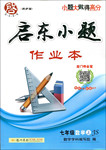题目内容
【题目】听下面一段独白,回答以下小题。
【1】When did it rain last time in Juárez?
A. Three days ago. B. A month ago. C. A year ago.
【2】What season is it now in Juárez?
A. Spring. B. Summer. C. Autumn.
【3】What are the elderly advised to do?
A. Take a walk in the afternoon.
B. Keep their homes cool.
C. Drink plenty of water.
【4】What is the speaker doing?
A. Hosting a radio program.
B. Conducting a seminar.
C. Forecasting the weather.
【答案】
【1】 C
【2】 A
【3】 C
【4】 A
【解析】
此题为听力题,解析略。
【1】此题为听力题,解析略。
【2】此题为听力题,解析略。
【3】此题为听力题,解析略。
【4】此题为听力题,解析略。

练习册系列答案
 黄冈经典趣味课堂系列答案
黄冈经典趣味课堂系列答案 启东小题作业本系列答案
启东小题作业本系列答案
相关题目